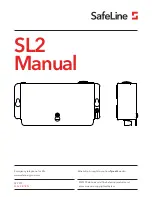
© National Instruments
|
4-5
Figure 4-2.
NI-PGIA
Table 4-2 shows how signals are routed to the NI-PGIA.
For differential measurements, AI 0 and AI 8 are the positive and negative inputs of differential
analog input channel 0. For a complete list of signal pairs that form differential input channels,
refer to the pinout diagram for your device in Appendix A,
Module/Device-Specific Information
Caution
The maximum input voltages rating of AI signals with respect to ground
(and for signal pairs in differential mode with respect to each other) are listed in the
specifications document for your device. Exceeding the maximum input voltage of
AI signals distorts the measurement results. Exceeding the maximum input voltage
rating also can damage the device and the computer. NI is
not
liable for any damage
resulting from such signal connections.
Table 4-2.
Signals Routed to the NI-PGIA
AI
Ground-Reference
Settings
Signals Routed to the
Positive Input of the
NI-PGIA (V
in+
)
Signals Routed to the
Negative Input of the
NI-PGIA (V
in-
)
RSE
AI <0..79>
AI GND
NRSE
AI <0..15>
AI SENSE
AI <16..79>
AI SENSE 2
*
DIFF
AI <0..7>
AI <8..15>
AI <16..23>
AI <24..31>
AI <32..39>
AI <40..47>
AI <48..55>
AI <56..63>
AI <64..71>
AI <72..79>
*
On NI 6225 devices, the reference for each AI <16..63> signal is AI SENSE 2, and each AI <64..79>
signal is AI SENSE in NRSE mode.
V
in+
V
m
= [V
in+
– V
in–
]
×
Gain
V
m
V
in–
PGIA
+
–
Measured
Voltage
Instrumentation
Amplifier
Summary of Contents for PXI-6289
Page 1: ...PXI 6289...
















































